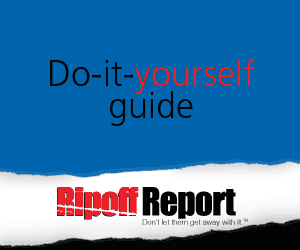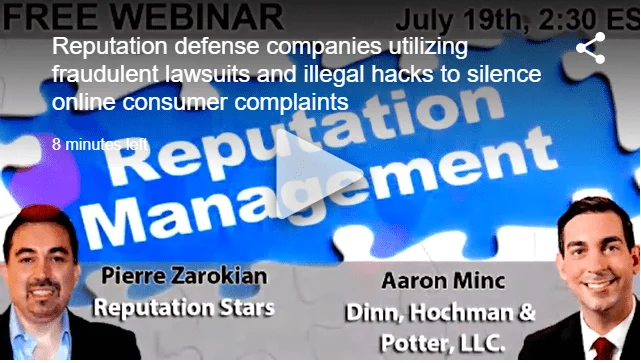Complaint Review: One Day Mold Removal - Seattle, Tacoma, Los Angeles, San Jose, Portland, Nationwide
- One Day Mold Removal onedaymoldremoval.com Nationwide U.S.A.
- Phone: 888-308-6653
- Web:
- Category: Inspections & Hazards
One Day Mold Removal "Mold Fogging SCAM" Beware of companies that offer "fogging" as a mold remediation/ removal solution. Handyman Matters Seattle, Los Angeles, San Jose,Washington Oregon, California,Nationwide
*REBUTTAL Owner of company: Correcting Some Inaccuracies in Your Report
listed on other sites?
Those sites steal
Ripoff Report's
content.
We can get those
removed for you!
Find out more here.
Ripoff Report
willing to make a
commitment to
customer satisfaction
Click here now..
Watch out for companies like "One Day Mold Removal" The National Mold Institute AKA Handyman Matters Enviroshield that offer fogging as an effective alternative to professional remediation. These companies prey on people's lack of knowledge in the name of making a quick buck.
Facts:
One Day Mold Removal is not a licensed contractor in any of the states that it offers services. The do not have licensing, bonding, or insurance in these states.
One Day Mold Removal uses the BBB online reliability program to deceive the unwitting consumer. The reason they have no complaints on file is;
a)They do not sell products or services online.
b)they are not members of the BBB in any state but Colorado, so if you are in Oregon and have been screwed by this company it is impossible to file a complaint as they do not appear in the database
c)They have no licensing, bonding, or insurance for the work they do in the States in which they offer it.
d)They have been issued a cease and desist by the state of California for spraying a pesticide without having a Pest Control Operators license.
Problems with fogging mold:
When dealing with a mold problem, strict adherence to the EPA Guidelines are recommended.
ALWAYS GET A COPY OF THE CONTRACTORS LICENSING, BONDING, AND INSURANCE. Make sure there are MOLD specific Pollution and Professional Liability riders on their insurance policies.
ALWAYS GET REFRENCES.
NEVER, use a company that uses Petri Dish Settling Plates to perform pre or post remediation clearance testing.
Never use a company that comes from another state.
Let's take a look at what these internationally accepted organizations say about fogging, biocides, etc.
EPA - Mold Remediation/Cleanup and Biocides
The purpose of mold remediation is to remove the mold to prevent human exposure and damage to building materials and furnishings. It is necessary to clean up mold contamination, not just to kill the mold. Dead mold is still allergenic, and some dead molds are potentially toxic. The use of a biocide, such as chlorine bleach, is not recommended as a routine practice during mold remediation, although there may be instances where professional judgment may indicate its use (for example, when immune-compromised individuals are present).
In most cases, it is not possible or desirable to sterilize an area; a background level of mold spores will remain in the air (roughly equivalent to or lower than the level in outside air). These spores will not grow if the moisture problem in the building has been resolved.
If you choose to use disinfectants or biocides, always ventilate the area. Outdoor air may need to be brought in with fans. When using fans, take care not to distribute mold spores throughout an unaffected area. Biocides are toxic to humans, as well as to mold. You should also use appropriate PPE and read and follow label precautions. Never mix chlorine bleach solution with cleaning solutions or detergents that contain ammonia; toxic fumes could be produced.
Some biocides are considered pesticides, and some States require that only registered pesticide applicators apply these products in schools. Make sure anyone applying a biocide is properly licensed, if necessary. Fungicides are commonly applied to outdoor plants, soil, and grains as a dust or spray examples include hexachlorobenzene, organomercurials, pentachlorophenol, phthalimides, and dithiocarbamates. Do not use fungicides developed for use outdoors for mold remediation or for any other indoor situation.
American Industrial Hygiene Association (AIHA)
Are biocides required or useful in remediation projects?
Biocides are disinfectant chemicals used to kill germs in order to prevent infections resulting from contact with these materials. In most mold remediations, biocides are not a substitute for thorough cleaning. Biocides are of limited use in remediation of indoor mold contamination for two main reasons:
1) The adverse effects caused by mold (other than infection) are due to metabolites present in their spores and secreted into the materials upon which molds have grown. The application of biocides may kill mold spores but it does not necessarily eliminate these metabolites. The only sure way to do this requires the physical elimination of mold and moldy materials by thorough cleaning or removal of the affected materials.
2) Most commonly used biocides do not kill molds effectively. Active fungal growth on a surface may produce a spore density of one million spores per square inch. Treating an active mold growth site with a spore density of one million spores per square inch with a biocide with an effectiveness of 99.999% would then leave an estimated 10 viable spores per square inch. As such, if the underlying moisture problem is not resolved, mold growth may re-occur.
The only situation where biocidal treatments are indicated is where the contaminant is one of the few fungi that are known to cause human infection. This is particularly important in health care facilities or other places with occupants who have impaired immune systems or who may be more susceptible than the general population to infection.
NYC Department of Health
The use of gaseous, vapor-phase, or aerosolized biocides for remedial purposes is not recommended. The use of biocides in this manner can pose health concerns for people in occupied spaces of the building and for people returning to the treated space if used improperly. Furthermore, the effectiveness of these treatments is unproven and does not address the possible health concerns from the presence of the remaining non-viable mold. For additional information on the use of biocides for remedial purposes, refer to the American Conference of Governmental Industrial Hygienists' document, "Bioaerosols: Assessment and Control."
American Conference of Governmental Industrial Hygienists (ACGIH)
Bioaerosols: Assessment and Control, 15.4 Biocide Use
Remediators must carefully consider the necessity and advisability of applying biocides when cleaning microbially contaminated surfaces. The goal of remediation programs should be removal of all microbial growth. This generally can be accomplished by physical removal of materials supporting active growth and thorough cleaning of non-porous materials. Therefore, application of a biocide would serve no purpose that could not be accomplished with a detergent or cleaning agent.
U.S. Army
WASHINGTON The US Army is weighing in on the war on mold, outlining for its facility managers, custodians and others how to prevent and remediate mold contamination.
In a 20-page guide issued earlier this year, the Army, among other things, recommended against the use of bleach and biocides, as well as against the use of gaseous ozone or chlorine dioxide for remediation.
"The use of bleach or other biocides is questionable in most cases," the Army manual states. "Removal of all mold growth can generally be accomplished by physical removal of materials supporting active growth and thorough cleaning of non-porous materials. Therefore application of a biocides serves no purpose."
As to the use of Ozone and Chlorine dioxide, the Army stated: "Both compounds are highly toxic and contamination of occupied space may pose a health threat. Furthermore the effectiveness of these treatments is unproven." Army researchers developed their guidelines partly by using research and data from the US Environmental Protection Agency (EPA), Institute of Inspection, Cleaning and Restoration Certification (IICRC), American Conference of Governmental Industrial Hygienists, the New York City Department of Health and the American Industrial Hygiene Association.
IICRC S520 Statements on Encapsulants Using encapsulants and sealants is discouraged. Remediators need to consider that the application of certain encapsulants or sealant products may change the permeability of materials, cause condensation problems in the building assembly (trap moisture), and result in future deterioration and potential liability issues. Use of encapsulants may impede, mask, or invalidate an inspection for dust and debris.
Encapsulants and sealants that have been applied without a complete clean up of mold growth may result in the necessity of sanding off or removing the encapsulants or sealant in order to properly remediate the mold growth. These compounds may contain nitrogen that helps support future mold growth. Encapsulants may also alter the surface flammability characteristics of certain materials.Encapsulation is not a cleaning method and should be avoided as a standard practice, however, it can be useful in the following special circumstances:
Application of a coating over porous or semi-porous surfaces from which mold cannot be fully removed (e.g. shellac, varnish, or lacquer over unfinished wood).
Lamination of irreplaceable or valuable documents.
It is recommended that remediators work closely with an Indoor Environmental Professional in making decisions about the advisability of encapsulation
There is a recognition that unique circumstances will arise and that biocides and encapsulants may be considered under specific conditions.When Condition 3 contamination (physical mold growth) cannot be physically removed using reasonable measures, or when ongoing moisture intrusion cannot be resolved, it may be necessary to manage the condition 3 area for extended periods of time using long-term engineering controls, encapsulants, sealants, or other methods.
Mahomod
Salem, Oregon
U.S.A.
This report was posted on Ripoff Report on 07/26/2007 12:10 PM and is a permanent record located here: https://www.ripoffreport.com/reports/one-day-mold-removal/nationwide/one-day-mold-removal-mold-fogging-scam-beware-of-companies-that-offer-fogging-as-a-mol-263381. The posting time indicated is Arizona local time. Arizona does not observe daylight savings so the post time may be Mountain or Pacific depending on the time of year. Ripoff Report has an exclusive license to this report. It may not be copied without the written permission of Ripoff Report. READ: Foreign websites steal our content
If you would like to see more Rip-off Reports on this company/individual, search here:
#1 REBUTTAL Owner of company
Correcting Some Inaccuracies in Your Report
AUTHOR: Andy - (United States of America)
SUBMITTED: Tuesday, November 16, 2010
I just ran across this and wanted to set the record straight.
I understand you have a problem with the One Day Mold Removal company/operators but, I find it irresponsible that you would lump us in with this company without a closer and more accurate examination of the facts.
The National Mold Institute was formed by medical doctors, a PHD Mycologist, and a PHD Pharmacist to assist those with low imune systems and chemical sensitivity.
The National Mold Institute did not perform the removal or remediation of mold. Air samples were collected via Versa Trap and submitted to a licensed lab to assist in the identification of an indoor mold problem.
The removal and remediation process was under the direction of a PHD Mycologist and performed by licensed companies. The National Mold Institute used only natural treatment procedures; at no time did we apply or use any of the chemicals listed in your assessment. It was our belief that any other products would be unsafe for the chemically sensitive and imune supressed persons we were servicing.
Handyman Matters is a nationally recognized Handyman Franchise that has nothing to with this company. It is not "AKA" anything other than Handyman Matters.
While I appreciate your zest for pointing out those irresponsible organizations that may be taking advantage of or harming the public you have inaccurately associated our organization with a company and a situation unfamiliar to us.

Advertisers above have met our
strict standards for business conduct.




































